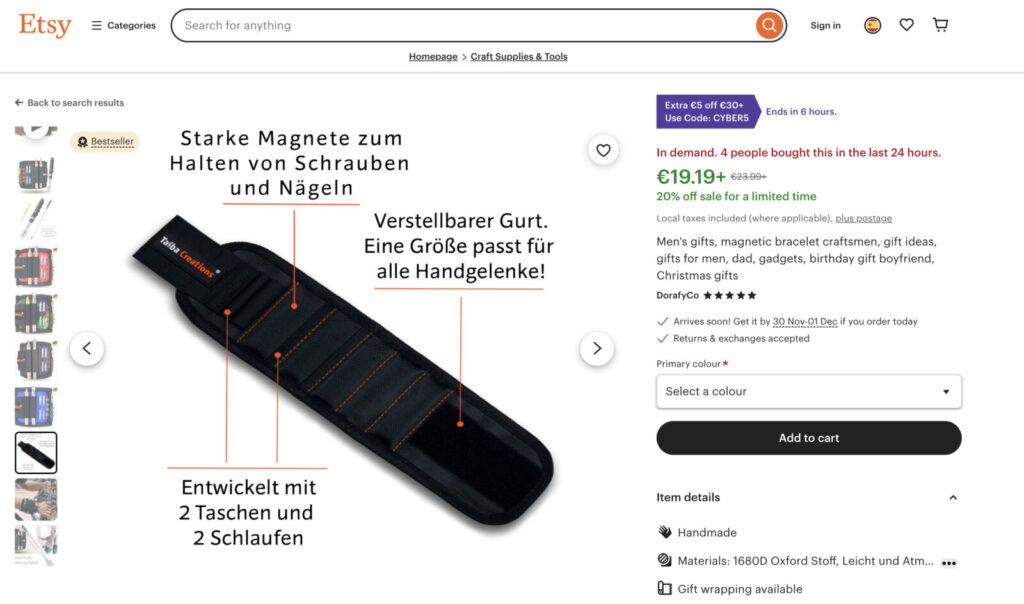It’s hard to say for sure how many percent of buyers make their final decision based on a product description. According to Econsultancy, at least 87% will read it accurately. Of these, 20% will read it in detail and in full, and the remaining 80% will simply scan it for key features (NNGroup research).
According to the Baymard Institute, 18% will refuse to make a purchase if they don’t find the necessary details in the text. Therefore, information on how to create descriptions of selling products will be extremely useful for all online store owners.
But let’s start with some introductory information – what functions a description has and how to turn it into a powerful marketing tool.
The description gives the customer a complete picture of the product, including its characteristics, dimensions, materials, how to care for it, and so on. That is, what we can’t show in a photo.
For example, without an explanatory text, it will be difficult for a potential buyer to understand what the melodies and books smell like.

Or, in general, to understand what we offer them and why they need it (as in the example below). Therefore, the main rule of thumb on how best to create a selling description is to understand your potential customer’s questions and answer them.

(What are they selling us in this photo? We could only tell from the description: it’s a bracelet for fixing various small things on the hand during repair work)
In addition, product descriptions on Etsy (and not only) allow you to emphasize the unique features of the product, which helps the buyer better understand how it differs from other, similar items.
A well-written text will help to: arouse interest and encourage action, shape the brand image (the so-called tone of voice), increase loyalty, provoke an emotional purchase, i.e. directly or indirectly influence conversion.
In our opinion, the ideal selling formula looks like this:
1. A headline that clearly reflects WHAT we offer + reflects quality features. For example: “Handmade genuine leather bag. Unisex. Laser engraving”.
2. Characteristics block: dimensions, materials, composition, number of units, etc.
3. Available options: options for colors, models, sizes, the ability to order an individual/personalized item.
4. Advantages/benefits:
5. Other important data that answers the main questions of your potential client:
6. Delivery, packaging and return policy
For many, speed and cost of delivery are no less important factors in making a decision than price.
It is also common (especially on platforms like Etsy) to buy gifts. The presence/absence of appropriate packaging can help close a deal or encourage a customer to go to a competitor.
Also remember that one of the key objections is the customer’s fear of making a wrong choice. Therefore, be sure to close it through the return policy.
7. Call to action. It’s rarely used in Etsy descriptions, but on the platform, this function is performed by buttons – after receiving the information they need, the reader knows what to do: either contact the seller (if they have any questions) or add the item to the cart (if they like everything).
However, it’s a good idea to call for a specific action: order now to get a discount/subscribe to our store/ask a question to place an individual order.
We hope we have fully covered the topic of how to best describe a product. But if you doubt that you’re ready to create selling texts on your own and would like to entrust this task to professionals, our digital department will be happy to help.